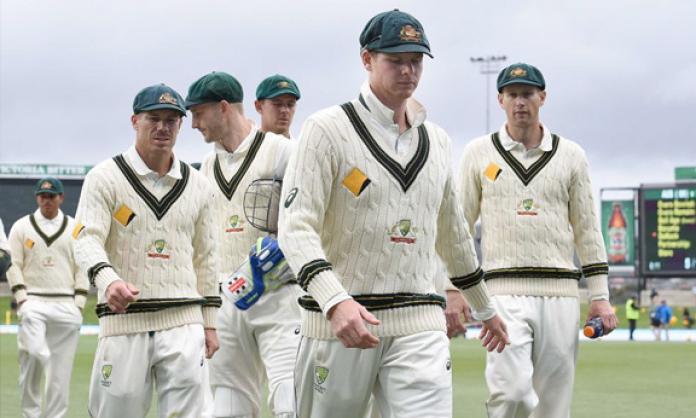The struggle between administrators and players is a re-emerging theme in Australian cricket. Cricket boards typically seek to monopolise power, unilaterally issue directives and manage the game singlehandedly. Players have responded by demanding greater opportunity to participate in cricket’s governing structures, access to information about how the game is being managed, and better means to communicate their concerns directly to the board.
These struggles have again resurfaced in the current standoff between Cricket Australia (CA) and the Australian Cricketers’ Association (ACA). In many ways, it is a direct resumption of hostilities from the last major pay dispute, which was resolved in the 1990s with an agreement that players would share in the game’s revenue.
One major difference is that in the 20 years since the revenue-sharing model was accepted, Cricket Australia has become a more bureaucratic corporate body.
In 2012, the CA board underwent a major restructure, abandoning its long-held process of electing board members from their state level equivalents. Instead, the governing board was transformed into a small board of independent directors. Without doubt, the former system was bureaucratic, with administrators electing other administrators. But the election process meant that there was a mechanism to place constraints on the board’s activities.
Of the nine-person board, seven directors have backgrounds in corporate business affairs and two are former players (Mark Taylor and Michael Kasprowicz). Chair of the board is David Peever (Rio Tinto). The other members are Bob Every (Wesfarmers), Tony Harrison (Council of the Australian Institute of Company Directors), Jacquie Hey (Qantas), Michelle Tredenick (Bank of Queensland), John Harnden (Australian Grand Prix), and Earl Eddings (Riskcom Group).
During his career in the private sector, Peever philosophised that industrial relations should be a “direct engagement” between a company and employees, without unions. He has long been a vocal critic of the Fair Work Act because it doesn’t restrict collective bargaining as much as John Howard’s widely-hated WorkChoices laws. At Rio Tinto, he introduced a range of anti-union measures, including offering non-union members preferential entitlements.
Since coming to Cricket Australia, Peever has made it clear that he would like to see the disappearance of the ACA. Throughout pay negotiations, he has attempted to sidestep the ACA and negotiate directly with the players. Cricket Australia’s proposed deal would substantially constrain ACA activities and finances.
This dispute is not primarily about wage levels or payment models, but the organisational structures behind professional cricket.
The Big Six Dispute, 1912
Australia was scheduled to tour England in the winter of 1912. The Australian Cricket Board of Control decided to select the manager to tour with the team, scrapping the long-standing convention that the players choose their manager.
Angry at the Board’s power grab, the players aggressively lobbied for a reversal. Public meetings were held and funds raised to send a team independent of the Board.
The Board refused to back down. In protest, six leading players, including Warwick Armstrong, Victor Trumper and Australian captain Clem Hill, refused to join the tour party and stayed home.
Though Clem Hill emerged victorious when the dispute boiled over into a fist fight between player and administrator, the Board ultimately came out on top and Australian cricket players didn’t claw back any degree of power until the 1970s.
The sacking of Bill Lawry, 1971
Australia toured India and South Africa in the summer of 1969-70.
In India, there were problems with off-field conditions relating to accommodation, travel, food, hygiene and security.
The South African leg of the tour was long and laborious, leaving players physically and mentally exhausted. It ended in a standoff between players and the Australian Cricket Board (ACB) over payments for the tour.
As captain of the team, Bill Lawry tried to bring to the Board’s attention his players’ grievances. He wrote two reports to the ACB, detailing the player concerns he was hearing in the dressing room, and offering a list of recommendations for improving future tours.
From that moment, the ACB wanted to remove Lawry, but it waited nine months until he was in a vulnerable position then communicated his sacking not to him directly but to the media.
World Series Cricket, 1977-9
Despite cricket in Australia being very popular and profitable, international level players have been paid so little that many have been forced to retire early.
Throughout the 1970s, the players made many approaches to the ACB including with proposals for revenue-sharing arrangements, all of which were stonewalled.
Media tycoon Kerry Packer took advantage of the situation by forming a rebel tournament, World Series Cricket, and lured all the country’s best cricketers to play in it.
After two years of sustained losses, financially and on-field, the ACB caved in and signed a deal which paid players as full time professionals.
Creating the Australian Cricketers’ Association, 1997-98
Thanks to World Series Cricket, international players were now being paid well, but state level players were still struggling on low wages. After years of underground networking, the ACA was founded in February 1997.
As the players’ union, the ACA claimed that it represented all Australian first class cricketers under federal industrial relations law.
A 10 month campaign of fierce public debate and behind-the-scenes manoeuvring ensued, as the ACB sought to refuse recognition to the players’ association. Players seriously considered taking strike action if the ACB wouldn’t negotiate with the ACA over new contracts.
In July 1998, the two bodies signed a memorandum of understanding, establishing new standard contracts for all state level players, and solidifying the ACA as a legitimate organisation in Australian cricket.










